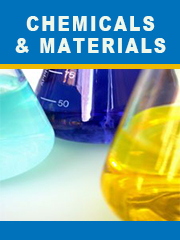TOP CATEGORY: Chemicals & Materials | Life Sciences | Banking & Finance | ICT Media

Download Report PDF Instantly
Report overview
The global Food Grade Gamma Nonalactone market was valued at US$ 118.8 million in 2023 and is projected to reach US$ 150.3 million by 2030, at a CAGR of 3.6% during the forecast period.
This research report provides a comprehensive analysis of the Food Grade Gamma Nonalactone market, focusing on the current trends, market dynamics, and future prospects. The report explores the global Food Grade Gamma Nonalactone market, including major regions such as North America, Europe, Asia-Pacific, and emerging markets. It also examines key factors driving the growth of Food Grade Gamma Nonalactone, challenges faced by the industry, and potential opportunities for market players.
The global Food Grade Gamma Nonalactone market has witnessed rapid growth in recent years, driven by increasing environmental concerns, government incentives, and advancements in technology. The Food Grade Gamma Nonalactone market presents opportunities for various stakeholders, including Baked Goods, Confectionery. Collaboration between the private sector and governments can accelerate the development of supportive policies, research and development efforts, and investment in Food Grade Gamma Nonalactone market. Additionally, the growing consumer demand present avenues for market expansion.
Key Features:
The research report on the Food Grade Gamma Nonalactone market includes several key features to provide comprehensive insights and facilitate decision-making for stakeholders.
Executive Summary: The report provides overview of the key findings, market trends, and major insights of the Food Grade Gamma Nonalactone market.
Market Overview: The report provides a comprehensive overview of the Food Grade Gamma Nonalactone market, including its definition, historical development, and current market size. It covers market segmentation by Type (e.g., Purity 98%, Purity 99%), region, and application, highlighting the key drivers, challenges, and opportunities within each segment.
Market Dynamics: The report analyses the market dynamics driving the growth and development of the Food Grade Gamma Nonalactone market. The report includes an assessment of government policies and regulations, technological advancements, consumer trends and preferences, infrastructure development, and industry collaborations. This analysis helps stakeholders understand the factors influencing the Food Grade Gamma Nonalactone market's trajectory.
Competitive Landscape: The report provides an in-depth analysis of the competitive landscape within the Food Grade Gamma Nonalactone market. It includes profiles of major market players, their market share, strategies, product portfolios, and recent developments.
Market Segmentation and Forecast: The report segment the Food Grade Gamma Nonalactone market based on various parameters, such as by Type, region, and by Application. It provides market size and growth forecasts for each segment, supported by quantitative data and analysis. This helps stakeholders identify growth opportunities and make informed investment decisions.
Technological Trends: The report should highlight the key technological trends shaping the Food Grade Gamma Nonalactone market, such as advancements in Type One technology and emerging substitutes. It analyses the impact of these trends on market growth, adoption rates, and consumer preferences.
Market Challenges and Opportunities: The report identify and analyses the major challenges faced by the Food Grade Gamma Nonalactone market, such as technical bottleneck, cost limitations, and high entry barrier. It also highlights the opportunities for market growth, such as government incentives, emerging markets, and collaborations between stakeholders.
Regulatory and Policy Analysis: The report should assess the regulatory and policy landscape for Food Grade Gamma Nonalactone, including government incentives, emission standards, and infrastructure development plans. It should analyse the impact of these policies on market growth and provide insights into future regulatory developments.
Recommendations and Conclusion: The report conclude with actionable recommendations for stakeholders, such as Application One Consumer, policymakers, investors, and infrastructure providers. These recommendations should be based on the research findings and address key challenges and opportunities within the Food Grade Gamma Nonalactone market.
Supporting Data and Appendices: The report include supporting data, charts, and graphs to substantiate the analysis and findings. It also includes appendices with additional detailed information, such as data sources, survey questionnaires, and detailed market forecasts.
Market Segmentation
Food Grade Gamma Nonalactone market is split by Type and by Application. For the period 2019-2030, the growth among segments provides accurate calculations and forecasts for consumption value by Type, and by Application in terms of volume and value.
Market segment by Type
Market segment by Application
Global Food Grade Gamma Nonalactone Market Segment Percentages, By Region and Country, 2023 (%)
Major players covered
Outline of Major Chapters:
Chapter 1: Introduces the definition of Food Grade Gamma Nonalactone, market overview.
Chapter 2: Global Food Grade Gamma Nonalactone market size in revenue and volume.
Chapter 3: Detailed analysis of Food Grade Gamma Nonalactone manufacturers competitive landscape, price, sales and revenue market share, latest development plan, merger, and acquisition information, etc.
Chapter 4: Provides the analysis of various market segments by type, covering the market size and development potential of each market segment, to help readers find the blue ocean market in different market segments.
Chapter 5: Provides the analysis of various market segments by application, covering the market size and development potential of each market segment, to help readers find the blue ocean market in different downstream markets.
Chapter 6: Sales of Food Grade Gamma Nonalactone in regional level and country level. It provides a quantitative analysis of the market size and development potential of each region and its main countries and introduces the market development, future development prospects, market space of each country in the world.
Chapter 7: Provides profiles of key players, introducing the basic situation of the main companies in the market in detail, including product sales, revenue, price, gross margin, product introduction, recent development, etc.
Chapter 8: Global Food Grade Gamma Nonalactone capacity by region & country.
Chapter 9: Introduces the market dynamics, latest developments of the market, the driving factors and restrictive factors of the market, the challenges and risks faced by manufacturers in the industry, and the analysis of relevant policies in the industry.
Chapter 10: Analysis of industrial chain, including the upstream and downstream of the industry.
Chapter 11: The main points and conclusions of the report.